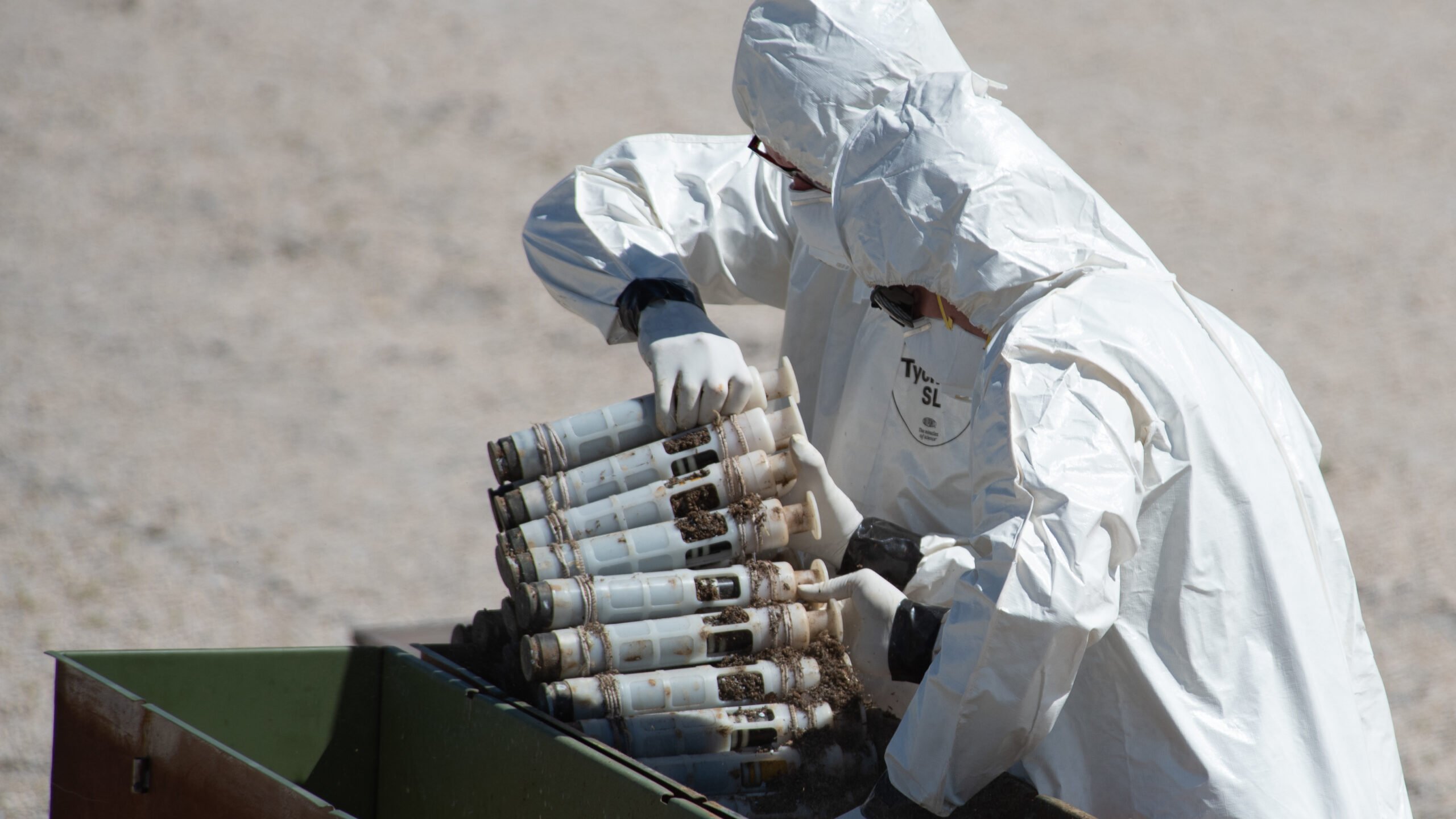
US Air Force National Guard Master Sgt. Derin Creek and Staff Sgt. Cody Bialcak, Explosive Ordnance Disposal Technicians remove over 500 depleted uranium rounds on June 23, 2022 at Tooele Army Depot, Utah. (US Air National Guard/Staff Sgt. Nicholas Perez)
WASHINGTON — The Biden administration formally announced plans today to begin delivering controversial 120 mm armor-piercing munitions to Ukraine for its ground forces to fire from its M1A1 Abrams tanks.
After months of speculation — and dodged questions at the Pentagon — over whether US-produced depleted uranium tank ammunition would eventually make it into combat inside Ukraine, the State Department unveiled the move as part of a larger $175 million weapons package. However, a Department of Defense spokesman declined to disclose how many rounds are part of that package due to “operational security considerations.”
“The quantities provided will significantly enhance the effectiveness of Ukraine’s M1 Abrams tank capability that will be delivered in the coming weeks,” the spokesman added in a brief statement to Breaking Defense. “We expect these to arrive by the time the Abrams tanks arrive.”
As for that synced up delivery date, DoD officials have said Kyiv will have the 31 tanks sometime this fall. Until then, approximately 200 Ukrainian soldiers are expected to remain at the Grafenwoehr Training Area in Germany continuing to hone their Abrams operator and maintenance skills.
But while the Ukrainian-manned Abrams will be taking aim at Russian forces, critics are likely to take aim at the Biden administration over the high-density armor-piercing rounds, as critics allege, in part, that the toxic fumes and the weapons remnants could be harmful to civilians and service members on both sides of the fight. The munitions contain depleted uranium, a radioactive and chemically toxic heavy metal, and when they hit an armored surface, they burn at higher temperatures, which creates a radioactive and chemically toxic fine dust, according to the International Coalition to Ban Uranium Weapons. Further, rounds that miss the target slowly corrode and release toxins into the soil and groundwater, leaving behind clean-up work for a country that will also be looking to remove cluster munitions. While both weapons have been fiercely debated, the US is now committed to providing Ukraine with both.
Earlier this year Britain said it would ship depleted uranium weapons to the Eastern European nation. At the time, Russia vocally protested the move, saying it represented a significant escalation — a claim the White House strenuously denied.
“I mean, this is yet another straw man through which the Russians are driving a stake,” White House spokesperson John Kirby told reporters in March. “This kind of ammunition is fairly commonplace, been in use for — for decades. I think what’s really going on here is Russia just doesn’t want Ukraine to continue to take out its tanks and — and render them inoperative. And if that’s really the concern — if the Russians are very concerned about their tanks staying fully operational, they can just take them across the border back into Russia and take them out of Ukraine; they don’t belong there in the first place.”
France, Germany ink deal on way ahead for ‘completely new’ future European tank
Defense ministers from both countries hailed progress on industrial workshare for a project that they say “will be a real technological breakthrough in ground combat systems.”


























